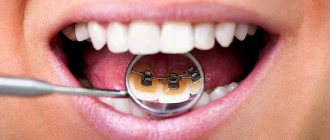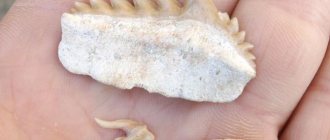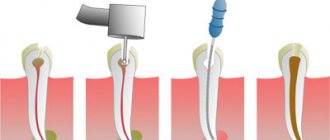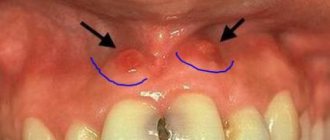The tooth extraction procedure is a surgical procedure. During this operation, the tooth and root are pulled out from the gum. Despite the apparent simplicity of the manipulation, the process can take a long time, especially if the case is complex and requires increased attention.
According to many patients, all dentists want to remove the tooth immediately. This is wrong. Qualified specialists at Dr. Jacques' clinic strive to preserve the beauty and health of natural teeth. If there is even a small chance to cure a tooth, they will take it. Well, if the case is serious and removal cannot be avoided, our dental surgeons with extensive experience will perform tooth extraction surgery quickly and painlessly.
Indications and contraindications for molar tooth extraction
Reasons for removing a molar tooth may be:
- purulent periostitis;
- abscess;
- phlegmon;
- large tumor in the tooth area;
- purulent periodontal disease;
- the presence of a cyst in the area of the diseased tooth;
- exposed pulp;
- longitudinal tooth fracture;
- critical tooth decay;
- critical tooth curvature;
- disease of the dental bone tissue;
- sinusitis.
The following reasons are contraindications to the removal of molars:
- acute heart diseases;
- acute viral diseases;
- flu;
- angina;
- renal failure;
- pancreatitis;
- hepatitis;
- acute diseases of the nervous system;
- oncological diseases
- initial and final stages of pregnancy;
- stomatitis;
- gingivitis
- general degeneration of the body;
- alcohol poisoning.
The list of treatments for dental pulpitis includes:
| — Mechanical and medicinal treatment of 1 channel |
| — Pulpitis (simple) root canal filling with three-dimensional obturation system E&Q Plus (1k/k) |
| — Pulpitis (simple) root canal filling with three-dimensional obturation system E&Q Plus (2k/k) |
| — Pulpitis (simple) root canal filling with three-dimensional obturation system E&Q Plus (3k/k) |
| — Pulpitis (complex) filling of root canals with the E&Q Plus three-dimensional obturation system (1k/k) |
| — Pulpitis (complex) filling of root canals with the E&Q Plus three-dimensional obturation system (2k/k) |
| — Pulpitis (complex) filling of root canals with the E&Q Plus three-dimensional obturation system (3k/k) |
Molar removal technology
Before proceeding with the removal of a molar, the doctor must make sure that there is no curvature of the roots. For this, an x-ray is taken. If the roots are not bent, the patient is given an anesthetic injection. After 10 minutes, the tooth can be removed.
First, the dentist carefully separates the gum from the body of the tooth. Then he grabs the tooth with pliers and begins to swing it and rotate it at the same time. After several such manipulations, the doctor pulls the tooth out of the alveoli.
In this sequence, both the upper and lower root teeth are removed. However, it is somewhat more difficult to grasp the upper molars with forceps.
Sometimes, when removing a molar, the doctor must first cut it into two or three parts and then pull out each part separately. This usually happens when the roots are bent.
In case of severe curvature of the roots, when they intertwine with the roots of neighboring teeth, removal must be done in fragments and under general anesthesia. In this case, the doctor completely exposes the gum around the diseased tooth.
If there is a cyst in the area of a diseased molar, the doctor is required to be highly qualified. This removal is done under both local and general anesthesia.
Two days after the removal of a molar, the patient must visit the dentist again to take an x-ray. This is necessary to ensure that all tooth roots have been removed.
What does the dentist use during surgery?
The process of tooth extraction is quite complex, despite its apparent simplicity, so different tools, techniques and materials are required. The main tools are forceps of different lengths and sizes for pulling out different teeth, elevators, chisels, excavators and a drill. The need to use a particular instrument is determined only by a doctor.
The technique used to remove a tooth is entirely determined by the degree of its destruction. Removal can be simple (using only one instrument), complex (when it is necessary to use two or more instruments) and atypical (if it is necessary to make an incision in the mucous membrane).
From materials, dentists use anesthesia (local or sedation), as well as high-quality suture material and a hemostatic sponge. All this is necessary to ensure a good result of the operation.
Is it painful to remove molars?
Today, only older people remember the terrible pain during the removal of molars. Nowadays, the quality of painkillers is so high that the patient does not feel pain at all, even with difficult removal. At the same time, after the anesthesia wears off, pain, of course, occurs, but it is quite tolerable and depends on how much the gum under the tooth was disturbed.
If the pain is still severe, then the dentist recommends taking a painkiller tablet. The same analgin successfully dulls pain for a long time.
In rare cases, the patient may experience throbbing and increasing pain. This annoying phenomenon occurs due to inflammation of the socket. If measures are not taken quickly, the tissue begins to fester in the hole. This process can be suppressed with drug treatment, but sometimes you have to open the gum and clean the hole from pus.
Possible complications
Among the most common complications that occur during tooth root removal are the following:
- dislocation of the jaw, if the doctor has little experience;
- inflammatory process in the hole;
- penetration of bone particles into it;
- damage to teeth located next to the one being removed;
- allergy to anesthesia;
- heavy bleeding.
If you do not skimp on dental services and contact an experienced specialist, as well as follow all medical recommendations, then the risk of complications is minimized.
Removal of molars during pregnancy
Let us say right away that any surgical intervention during pregnancy is extremely undesirable. If a molar tooth hurts at this time, then ideally it would be best to simply heal it. Unfortunately, sometimes this is no longer possible and the diseased tooth has to be removed.
It is highly undesirable to remove molars in the first and last months of pregnancy. It is at this time that the fetus is most vulnerable.
If it is possible to postpone the removal of a molar until the birth of the child, then this is exactly what should be done.
Under no circumstances should you hide your pregnancy from your dentist. On the contrary, this should be said immediately. In this case, the doctor will select a harmless anesthetic that will not cross the placental barrier.
If a pregnant woman is facing a complex molar tooth extraction, then this should only be done in a hospital setting. After removal, the patient should be under medical supervision for at least two to three days. This is due to the fact that very often, after the removal of a molar, pregnant women experience a sharp increase in body temperature, and this is extremely harmful for the fetus.
Pain after removal
Since molar removal is still a surgical operation, albeit on a small scale, complications sometimes arise after it, including bleeding, inflammation of the gums, and loss of sensitivity. If the extraction went without complications, slight pain may be observed for 2-3 days after the intervention. There is nothing wrong with this; cool compresses help relieve swelling of the tissues; they are applied for 10–15 minutes.
To make the healing process of the hole more comfortable, the patient should follow the following recommendations:
- do not eat food immediately after extraction for 2–3 hours;
- make cool compresses 3-4 times a day, applying them to the painful and swollen area;
- do not visit places where the air temperature is too high or low and, moreover, do not allow sudden temperature changes;
- do not rinse the mouth on the first day so that a blood clot forms at the bottom of the hole - it is necessary to protect the wound from infection;
- in the absence of swelling and fever, you can relieve pain by taking Analgin, Baralgin or Ketorol tablets;
- give preference to soft food in the first two days after extraction;
- Do not drink carbonated drinks, spicy and sour foods.
If acute pain is accompanied by a rise in temperature and a sharp deterioration in well-being, you should not delay a second visit to the doctor - most likely, an infection has entered the hole or a small fragment of a tooth root remains there. Only a dentist can determine the cause of the ailment and solve the problem. The intensity of pain during extraction is the result not only of the anesthetic used, but also of the psychological state of the patient himself.
A problem-free procedure also depends on which teeth are being removed, whether there is an inflammatory process in the oral cavity, and whether the roots are large and thick. But in most cases, patients who were initially terrified of having their molars pulled out say goodbye to this problem forever, since modern dentistry allows extraction to be carried out absolutely painlessly and comfortably for the person.
Molar tooth extraction in children
Unfortunately, young children often develop diseases in both their primary and permanent molars. Worse, it is not always possible to heal them. Dentists remove permanent teeth for children only when there is no way to save them.
Primary molars are both treated and removed. If a permanent tooth begins to grow under a baby molar, then the baby tooth is always removed, since it interferes with the normal formation of the permanent tooth.
At the same time, dentists never agree to premature removal of baby molars. Such teeth are sure to heal. If you remove a baby tooth ahead of schedule, then the baby will develop a crooked bite.
There are situations when a child’s molar tooth must be removed. Such situations include:
- molar root cyst;
- presence of granuloma;
- inflammation of the tooth root;
- inflammation of the nerve of the lower jaw;
- severe destruction of the integrity of the tooth.
Are baby teeth pulled out?
Extraction of temporary units is carried out if there are medical indications for this. If the change takes place in a timely manner, no curvature of the dentition is observed; there is no need to loosen the teeth ahead of time, as this is fraught with malocclusion in the future.
The procedure cannot be avoided if:
- caries has become so rampant that all that remains of the crown are the roots;
- for some reason, urgent dental treatment cannot be performed;
- The permanent tooth has already erupted, but the milk tooth is still sitting in its place;
- flux has developed, body temperature is elevated, the patient is worried about acute pain;
- a cyst has formed on the root;
- in the gum area a fistula filled with purulent contents is visualized;
- periodontitis has been diagnosed, which can provoke the death of the permanent tooth germ;
- root resorption occurs with a delay, which poses a threat to permanent occlusion.
Extraction is also carried out if the tooth is very loose, but does not fall out. This leads to the fact that the child cannot eat normally and has a lisp.
Is it possible to remove a molar tooth yourself?
Trying to remove a molar tooth yourself is extremely dangerous. The only exception is very severe tooth looseness. It should be borne in mind that complete removal even in this situation will not work. You will simply break off the body of the tooth from the root, and nothing more. In any case, after such an independent removal, you need to visit a dentist, who will determine what should be done next. Sometimes an artificial tooth is installed at the root, and it can last for more than one year. If the root has defects, then it has to be removed.
There are situations when you have to remove a child’s very loose baby tooth at home. In this case, you should thoroughly brush the baby’s teeth and disinfect the oral cavity. Then you should wrap your fingers in sterile gauze, loosen the tooth thoroughly, and only then try to pull it out. If this was not possible on the second attempt, then the child must be taken to the dental clinic in any case.
If you have successfully removed the tooth from the socket, then you must firmly place a gauze swab in the socket and leave it there for 30 - 40 minutes. In the next two hours, the child should not be allowed to eat or drink.
Even if the removal was successful, the baby still needs to be shown to the dentist. This is the only way to protect your child from possible complications.
What does the sensation of pain depend on?
How painful it is to pull teeth, according to research, depends on several factors. In the same patient, the intensity of pain during extraction may vary depending on the following signs:
- a molar or baby tooth needs to be pulled out - removal of a baby molar is almost painless, since it does not have powerful long roots, like those of a permanent one;
- location on the jaw arch - frontal molars are removed with a feeling of much less intense pain, since they are smaller in size, their root system is not as developed as that of the lateral teeth. The same can be said about trauma to the surrounding soft tissues - they suffer less, especially in comparison with wisdom tooth extraction;
- tooth shape and number of roots - by nature, human molars can have 1-2 or 3-4 branches of a stabilizing root system. So, tooth extraction will be more uncomfortable the more root branches the molar has.
It is necessary to clarify that whether it is painful to pull out a tooth depends not only on the listed factors, but also on the perception of the procedure by the person himself. If you experience a feeling of panic and intense fear before the extraction, this psychological state can directly affect the procedure and actually provoke intense pain. There are many stories among patients not only about how much pain is felt during extraction, but also that there is a big difference whether a molar is removed from above or below, supposedly this affects the intensity of the discomfort.
We need to figure out whether these rumors have a scientific basis. Dentists claim that, regardless of the location of the tooth, it can be removed completely painlessly if high-quality anesthesia is administered, but the jaw may begin to hurt after the end of the freezing period. The severity of the pain syndrome will depend on several points:
- how much bone and soft tissue was destroyed;
- is there an acute inflammatory process at the time of removal;
- a frontal or lateral tooth is subjected to extraction;
- the lower or upper molar is removed;
- whether there is an accumulation of pus in the area of the unit being removed.
According to medical statistics, the removal of the upper incisors is less painful, since their root system is not as powerful and tortuous as that of the lower teeth.
The fact that lower units are more difficult to remove from the bed is also due to the density of the bone tissue. All these factors directly affect the degree of destruction and recovery time after the molar has been removed. Therefore, it makes no sense to say that it is painful to remove the lower teeth, but not the upper ones; the location will only affect the adaptation period after extraction.











